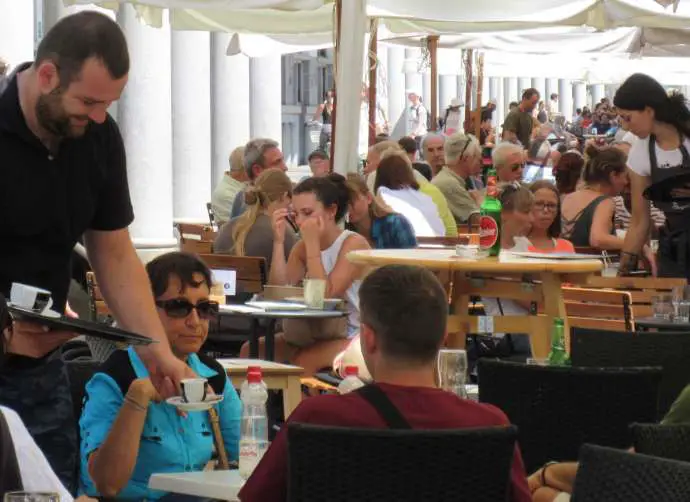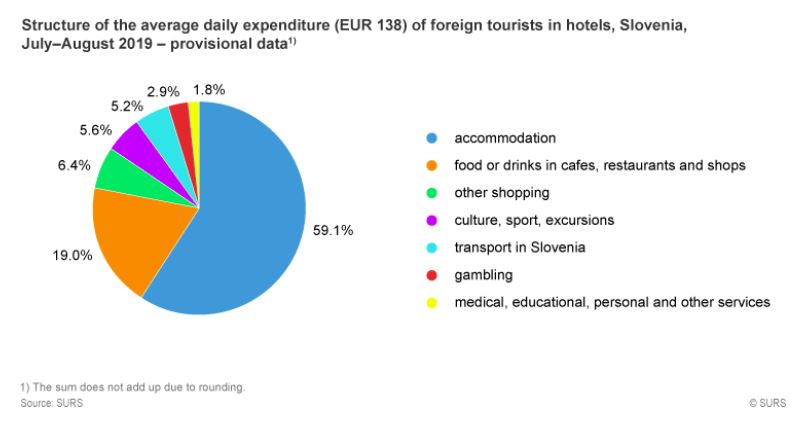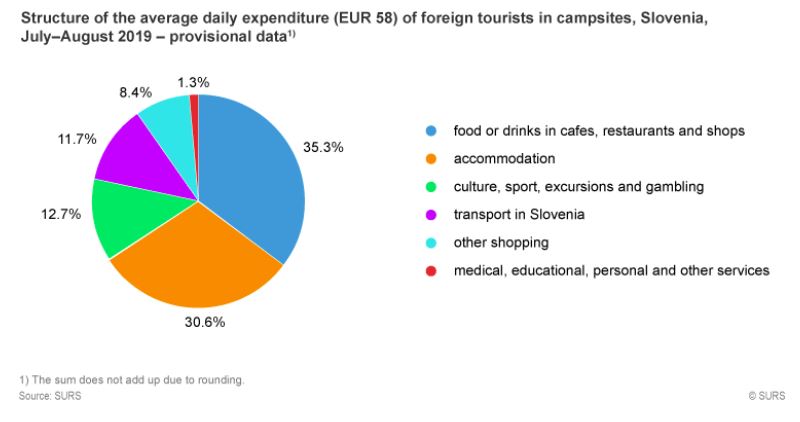STA, 17 December 2019 - A foreign tourist spent on average EUR 97 per day in Slovenia during this year's summer season. Those staying in hotels spent more - EUR 138 daily, while those on camping holidays spent considerably less - EUR 58 per day, shows the Statistics Office data released on Tuesday.
Visitors from non-European countries were the most generous among all tourists, spending the most on accommodation, food, drinks, transport, leisure activities and shopping in July and August - as much as EUR 153 per day.
German tourists, who generated the most overnight stays in Slovenia, spent on average EUR 64 per day. Almost 60% of all overnight stays were spent in campsites.
Foreign tourists staying in hotels spent more than half of their daily budgets on accommodation, while those staying in campsites spent the majority of their budgets on food and drinks.
Almost 90% of foreign tourists travelled to Slovenia in the peak summer season for private reasons, 5% were on a business trip, mostly visiting Ljubljana, while 6% were only passing through.
Mostly they picked Slovenia as a holiday destination (73%), while some also came to visit cultural and natural attractions (8%) or to get involved in sports activities (7%).
A total of 35% booked their holidays through accommodation establishments, some 30% made reservations on booking sites, while over 10% used travel agencies.
Some 15% arrived in Slovenia spontaneously, without booking accommodation in advance - they were mostly from Europe. Non-European tourists were more cautious, with over 40% using travel agencies.
Most of them visited Slovenia with a partner (44%), followed by those travelling with families (31%), co-workers or business partners (22%), friends (11%), alone (9%) or with other family members (2%).
More on this data can be found at SURS








